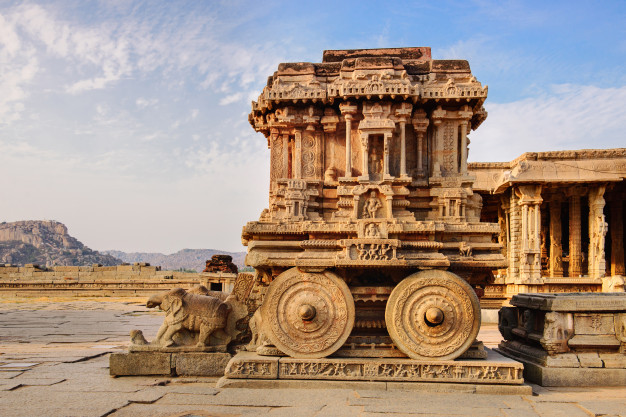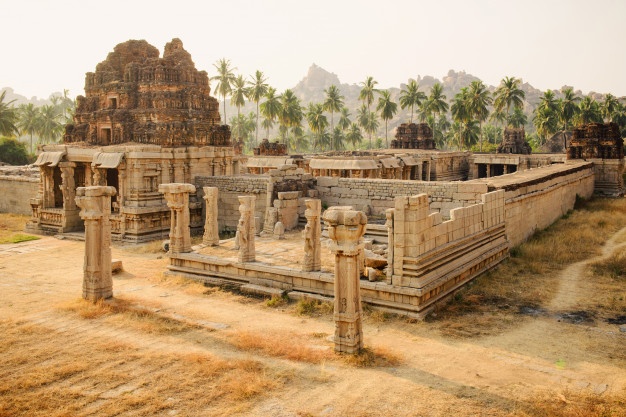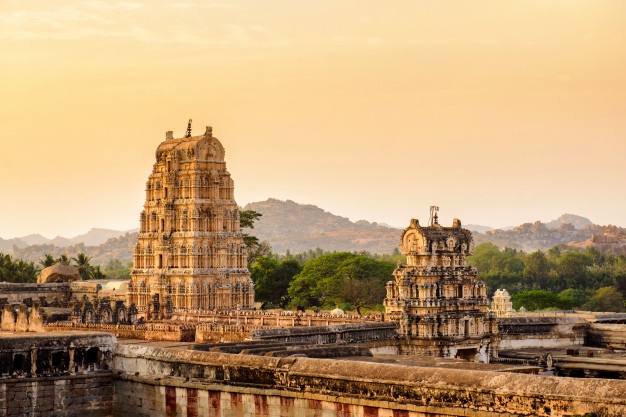Hampi- An architectural dream
The magnificent city and the UNESCO World Heritage Site located in east-central Karnataka, India called Hampi or Hampe is known to be an open-air museum that is spread over 4,100 hectares. Hampi was the capital of the Vijayanagara Empire in the 14th century. By 1500 CE, Hampi-Vijayanagara was the world’s second-largest medieval-era city after Beijing and probably India’s richest at that time, attracting traders from Persia and Portugal.
Located in Karnataka, India near the modern-era city of Hosapete, Hampi’s ruins are spread over 4,100 hectares (16 sq mi) and it has been described by UNESCO as an “austere, grandiose site” of more than 1,600 surviving remains of the last great Hindu kingdom in South India that includes forts, riverside features, royal, and sacred complexes, temples, shrines, pillared halls, mandapas, memorial structures, water structures, and others.

Hampi is located in hilly terrain formed by granite boulders. The Hampi monuments comprising the UNESCO world heritage site are a subset of the wider-spread Vijayanagara ruins. Almost all of the monuments were built between 1336 and 1570 CE during the Vijayanagara rule. The site has about 1,600 monuments and covers 41.5 square kilometers (16.0 sq mi).
The Hampi site has been studied in three broad zones; the first has been named the “sacred center” by scholars such as Burton Stein and others, the second is referred to as the “urban core” or the “royal center”; and the third constitutes the rest of metropolitan Vijayanagara.

The sacred centre, alongside the river, contains the oldest temples with a history of pilgrimage and monuments pre-dating the Vijayanagara Empire. The urban core and royal centre have over sixty ruined temples beyond those in the sacred centre, but the temples in the urban core are all dated to the Vijayanagara Empire.
The urban core also includes public utility infrastructure such as roads, an aqueduct, water tanks, mandapa, gateways and markets, monasteries.
This distinction has been assisted by some seventy-seven stone inscriptions. Most of the monuments are Hindu; the temples and the public infrastructure such as tanks and markets include reliefs and artwork depicting Hindu deities and themes from Hindu texts.

There are also six Jain temples and monuments and a Muslim mosque and tomb. The architecture is built from the abundant local stone; the dominant style is Dravidian, with roots in the developments in Hindu arts and architecture in the second half of the 1st millennium in the Deccan region. It also included elements of the arts that developed during the Hoysala Empire rule in the south between the 11th and 14th century such as in the pillars of Ramachandra temple and ceilings of some of the Virupaksha temple complex.
The architects also adopted an Indo-Islamic style in a few monuments, such as the Queen’s bath and Elephant stables, which UNESCO says reflects a “highly evolved multi-religious and multi-ethnic society”.
The best way to experience this UNESCO World Heritage Site is to take a leisurely stroll through the eloquent ruins or take a bicycle/ bike ride. A day or two will suffice to see all the important structures.
Recently, The Hampi-based Hanumad Janmabhoomi Teertha Kshetra Trust, a private trust, is planning to build the statue at a height of 215 m and an estimated cost of Rs 1,200 crore in Kishkindha, the birthplace of Hanuman, over the next six years.
With inputs from various online sources




GIPHY App Key not set. Please check settings